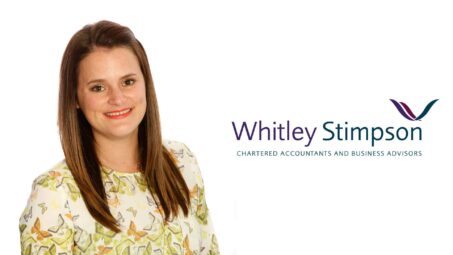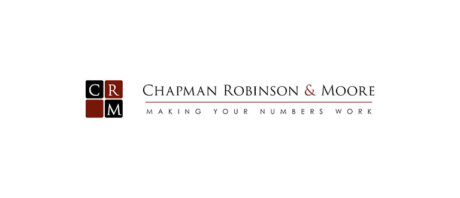
Chapman Robinson & Moore – Budget 2020 Response
New Chancellor Rishi Sunak presented the Spring Budget on 11th March 2020. Of course, there was no Autumn Budget 2019 due to the general election, so this sees a return to a March Budget affecting the tax year starting 6th April.
We wait to see whether we return to the pattern of the Autumn Budget containing the detail to take effect from the following April, with the Spring statement being more of a report back on the state of the economy and the nation’s finances, with only minor technical changes being made to the law. We would certainly welcome this to allow time for businesses and individuals time to plan for forthcoming changes.
Set against the backdrop of Coronavirus (COVID-19) and Brexit, there was much speculation as to the contents and theme of the Budget. There was a combination of short-term measures to address the economic effects of the Coronavirus, and also some significant capital commitments in respect of infrastructure projects. To see the main announcements, and a reminder of forthcoming changes previously announced, and practical guidance on these points and how they may affect you and your business, please read below:
Companies and Small Business
Corporation Tax rate
In line with previous announcements, it was confirmed that Corporation Tax would remain at 19% from April 2020, with the cut previously planned being cancelled.
Research and Development tax credits
It was announced in the 2018 Autumn Budget that there would be a return of a cap on the amount of refundable R&D tax credit available to loss making SMEs. This will once again be linked to the level of PAYE and NIC payments made. With effect from 1st April 2021 (a delay of one year from previous announcements), the amount of refundable credit will be capped at three times the PAYE and NIC payable for the year. Any unused losses will be carried forward as trading losses to be utilised as and when the company turns to profit.
A new announcement in this Budget was that “Above The Line” or “RDEC” credit would increase from 12% to 13%, meaning that for companies unable to claim under the more generous scheme for SMEs, the additional tax benefit (beyond the normal tax relief on costs) of R&D spend would increase from £972 to £1,053 for every £10,000 spent
Planning point: Many companies fail to claim R&D tax credits to which they are entitled. If your company incurs costs in overcoming technical uncertainties, then you may have a valuable claim to make. If you would like to arrange a free review of your circumstances, please contact Alan Sowden on 01865 379272. Alternatively, please see this article on our website for sector specific examples of qualifying cases: http://crmoxford.co.uk/rd-tax-relief-typical-claims-see-our-briefing-notes
National Insurance for employees and employers plus the self employed
The earnings threshold for employees will increase from its current level of £166 per week to £183 per week from April 2020 (£9,500 per annum). The Upper Earnings Limit will remain unchanged at £962 per week to remain in line with the higher rate threshold for income tax (see later). However, the secondary (or employer’s) threshold will only increase to £169, meaning there is now a divergence in these two limits.
Additionally, the threshold for Class 4 NIC paid by the self employed (including partners in a partnership) will also rise to £9,500 per annum (upper limit unchanged at £50,000). Class 2 NIC will rise from £3.00 per week to £3.05 per week, but will remain payable with your January and July tax payments as has been the case in recent years.
The Employment Allowance, which provides exemption to businesses from paying Employer’s NIC, increases from £3,000 to £4,000 with effect from April 2020. To qualify for this you do not need to employ any new staff; it is available to all employers, although groups of companies and companies under common control only get one allowance. This is designed to remove the Employer’s NIC cost of employing four full time employees on the National Living Wage (see later) and exempts the first £4,000 of Employer’s NIC which would otherwise be payable. It was announced the Autumn 2018 Budget that this allowance will no longer be available to Employers with NIC liabilities of over £100,000 for the previous year with effect from April 2020.
A reminder that where a sole director is the sole employee in respect of whom Employer’s NIC is payable, the Employment Allowance ceased to be available from April 2016.
Planning point: This is designed to counteract a complex NI avoidance scheme. If you are a genuine “one man” company, it appears that appointing a family member as say Company Secretary and paying £1 of Employer’s NIC in respect of them may avoid the removal of the Employment Allowance.
Planning point: If you have a group of companies (a holding company with one or more subsidiaries), or are involved with more than one company, please get in touch with your usual contact at CRM to see how the allowance will work best for you
Planning point: If you are not the sole employee/director of your own company (or as outlined above, could include a second employee going forwards) and currently pay yourself below the NIC threshold, you may wish to consider increasing your salary to utilise your personal allowance in full. This will result in a net gain, since corporation tax relief at 20% will exceed the employee NIC suffered at 12% and the 13.8% employer NIC will not be due. If you already pay more than £3,000 employers NIC for other employees, you will not benefit from this option. Please see the point above regarding restriction of the allowance from April 2016.
National Minimum Wage/National Living Wage
There will be a rise in the National Living Wage from £8.21 to £8.72 per hour for over 25s from April 2020 as previously announced. There are also to be increases in the National Minimum Wage from 1st April 2020 to £8.20 per hour for 21-25 year olds (from £7.70), £6.45 per hour for 18-20 year olds (from £6.15), £4.55 per hour for 16-17 year olds (from £4.35) and an increase in the apprentice rate from £3.90 to £4.15 per hour. A reminder that this and future increases apply from April each year. It was announced that the National Living Wage is to be rolled out to workers aged 21 or over by 2024, and by the same date it should be at a level of two thirds of median earnings. On this basis it is forecast to be £10.50 by 2024.
Auto-enrolment pension contributions
A reminder that the minimum contributions under auto-enrolment will remain unchanged in April 2020 (at 3% employer, 8% total).
Planning point: If you have a significant number of employees contributing to a scheme, you may wish to consider making the contributions on their behalf via a salary sacrifice scheme in order to save both the employee and employer NIC on these amounts. An employer with 10 employees earning the UK average earnings of £26,416 (per the ONS), utilising a salary sacrifice scheme would save approximately £1,350 p.a. Employer’s NIC, and save each employee around £115 employee NIC.
Capital allowances changes
A reminder that there were significant changes made to allowances available for capital expenditure in the Autumn Budget 2018.
Firstly, the Annual Investment Allowance (AIA), which gives 100% allowance against taxable profits for capital expenditure in the year of purchase, increased from £200,000 to £1M for two years from 1st January 2019 to 31st December 2020. It is then expected to revert to its longer-term level of £200,000 from January 2021.
Planning point: If your year end is not December, then for the years which span the change, the allowance is calculated pro-rata, but you can only benefit from the extra allowance for expenditure actually made in 2019 and 2020. For parts of a year falling after 1st January 2021, then this restriction is even greater. E.G. XYZ Ltd has a March year end. For March 2021, the maximum AIA available for the period is (3/12 x £200k + 9/12 x £1M) £800k. However, only expenditure of up to £50k (3/12 x £200k) made in the part of the year January to March 2021 can qualify for AIA, whilst up to the whole £800k in the first part of the year can qualify. Therefore timing of investment is important
The new Structure and Buildings Allowance (SBA) gives a flat rate 2% allowance for the cost of buildings other than residential buildings (shops, offices, factories, warehouses, hotels, care homes etc). Expenditure on land, planning costs and parts of a structure which can qualify as plant and machinery (and thus attract AIA and WDA) will not qualify for this new SBA. There will be no claw back of allowances if the building is sold, and the new owner will inherit the flat rate 2% allowance based on original cost. A surprise announcement in the 2020 Budget was that this will increase from 2% straight line to 3% straight line from April 2020.
Planning point: The new Structure and Buildings Allowance applies to building works where the contract is entered into on or after 29th October 2018. It is important to be aware of this new relief if you are buying a commercial property to ensure that sufficient enquiries are made in relation to this.
Planning point: Many owners of commercial property are not aware of the hidden tax allowances available to them in terms of the plant and machinery which is part of the building (e.g. electrical systems, plumbing systems etc). We can arrange a free review with our specialist partners to identify whether you have the potential to claim tax relief on your existing and new commercial buildings which could be worth many thousands of pounds. Please contact Alan Sowden on 01865 379272 if you like to discuss your own commercial buildings and the possible tax benefits available to you.
To support the uptake of xero emissions vehicles, it was announced that 100% first year allowance for zero emission vehicles would be extended beyond April 2021, when it was otherwise due to expire.
IR35 changes
The recent changes affecting contractors working for public sector bodies are to be rolled out to the private sector as previously announced. This means that from April 2020, the end user of a contractor (with an exemption for small businesses, using Companies Act definitions) will be responsible for ascertaining the correct treatment of the engagement from a tax perspective.
Planning point: We can assist both parties by providing access to the leading authorities in contract reviews to help minimise risks to all parties. Please get in touch with your usual contact at CRM if you would like to find out more.
Changes to Statutory Sick Pay and other measures in relation to Coronavirus
It had already been announced that Statutory Sick Pay (SSP) would be payable from day one of illness when it relates to Coronavirus rather than day four. There were some further announcements in this regard. Firstly, this treatment was extended to those self-isolating but without symptoms (e.g. due to travel history, or close contact with an infected individual). Significantly, it was announced that, rather than being borne by the employer, SSP paid in relation to Coronavirus would be reclaimable from the HMRC (up to 2 weeks per employee) where the employer has less than 250 employees, measured at 28th February 2020. It was re-iterated that you should not request a GP’s note where Coronavirus is suspected, but you should retain records of staff absence. Please note that regulations applying to other illnesses are not affected by this announcement, so someone absent for unrelated illness will be paid SSP from day four, and this will not be reclaimable from HMRC.
Planning point: There will likely be a software update required to reclaim this, or a workaround from your payroll software provider. Please remember that you will need to actively claim this back though your payroll software, and then offset against your normal PAYE payments, in the same way as when reclaiming Statutory Maternity Pay.
As well as the various rates reliefs and £3,000 grant claimable by businesses qualifying for small business rates relief (see later), there were further support measures for businesses affected by the Coronavirus. Time to Pay arrangements with HMRC, where tax payments are deferred, are to be extended, and there will be access to short term lending under the Coronavirus Business Interruption Loan Scheme, which will be Government backed loans delivered through high street banks.
Planning point: It is important to deal with cashflow difficulties sooner rather than later. If you are concerned about cashflows in the forthcoming months, it would be wise to investigate Time to Pay with current tax liabilities (PAYE, VAT, corporation tax and personal tax under self assessment) sooner rather than later, along with other financing options – do not wait until you are at crisis point.
Business rates reductions and small business grant
The Government had previously announced the Business Rates retail would be 50% for retail businesses occupying properties with a Rateable Value of less than £51,000 from April 2020 (previously a third). This is to be increased to 100% for 2020/21 as a response to the expected impact of Coronavirus on this sector. Furthermore, it is to be extended to the leisure and hospitality sectors (including Museums, art galleries, theatres, caravan parks, small hotels and B&Bs, sports clubs, night clubs, club houses and guest houses)
Furthermore, the £1,000 discount for pubs with a Rateable Value of under £100,000 is to be increased to £5,000 for the year 2020/21.
Additionally, it was announced that businesses qualifying for Small Business Rates Relief (due to having a Rateable value of under £12,000) would be eligible for a grant of £3,000. The details around claiming this are not yet known.
A fundamental review of business rates was announced, with a report expected in the Autumn Budget.
Personal Tax
Income tax rates and allowances
A reminder that the current personal allowance of £12,500 will remain unchanged from 2020 (after large increases in recent years). Furthermore, the basic rate band for 2020/21 is to remain at £37,500.
This means that the higher rate threshold will be continue to be £50,000 from April 2020. The NIC upper limit will continue to align with the higher rate threshold.
The additional rate of income tax remains at 45% for taxable income over £150,000 (barring dividends – see below).
Furthermore, the personal allowance will still begin eroding when income reaches £100,000, meaning people with incomes of £100,000-£125,000 will suffer an effective 60% tax rate within this bracket.
As previously announced, from 2015/16 married couples (and those in a civil partnership) will be able to transfer 10% of their personal allowances to each other, helping couples where one person does not fully use their own allowance. However, where one of the couple is a higher rate or additional rate taxpayer, this facility will not be available.
Planning point: If you are married or in a civil partnership, it remains best practice to utilise both spouses’ personal allowances and basic rate bands where possible, whether this be by paying income from your business to both spouses within legitimate boundaries, or by transferring investment assets between spouses.
Planning point: If your income is at or near the higher rate, additional rate or £100,000 limit, there may be options for mitigating the impact of these tax rates depending on your personal circumstances. Please get in touch if you would like a review carried out to ensure your tax bills are kept to a minimum.
Planning point: If you currently take a minimal salary from your own company, then the increase in personal allowance needs to be considered in conjunction with NIC limits. From April 2020, we would suggest that a salary in the region £9,000 p.a. (£750 pcm) could be considered optimum for these purposes. At this rate you will pay a small amount of NIC. To avoid NIC entirely, a salary of up to £8,788 p.a. may be taken. Please see the comments on Employment Allowance above – if you do not pay over £4,000 in Employers NIC already (and do not utilise your personal allowance on other income such as rental income), then you may benefit by paying up to the £12,500 personal allowance as a salary from April 2020. Please see the comment in the National Insurance section regarding Employment Allowance if a sole director is the only employee in respect of whom Employers NIC is payable.
Planning point: If your income is regularly in the 60% effective bracket (£100-125k), and you have a degree of control over it (for example if you run your own company), it may be sensible to defer income in excess of the threshold until the next tax year where practical (e.g. by delaying dividend or bonus payments), or to accelerate pension contributions to bring income below the relevant threshold (subject to contribution limits). Alternatively, you could consider bringing forward the excess income from next year into this tax year in order to get below the threshold next year. By doing this, you can seek to get your income under the relevant limit every other year and reduce the average tax rate on your income over the years.
Savings taxation
A reminder that a “Personal Savings Allowance” has been in place since April 2016. Under this scheme, interest income of £1,000 for basic rate taxpayers, or £500 for higher rate taxpayers, will be exempt from tax. Additional rate taxpayers (with income over £150,000) will not benefit from this exemption. Automatic deduction of tax at source by banks will cease.
Planning point: Many small business owners may not have significant personal savings outside of an ISA to utilise this allowance, but may be owed a significant amount by their trading company. If, for example, your company owed you £25,000, you may decide to charge the company say 4% annual interest from April 2016. As long as you are charging no more than a market rate of interest, then the company should obtain a tax deduction for the £1,000 interest paid in this example, and as a basic rate taxpayer, no income tax is payable by you personally. For a higher rate taxpayer, it would likely be preferable to reduce the rate charged to generate interest within the £500 reduced allowance for a higher rate taxpayer.
Lifetime ISA
From April 2017, people under 40 have been able to open a “Lifetime ISA (LISA)”. These will run alongside the normal cash and shares ISAs. Contributions into a LISA up to the age of 50 will be part matched by the government with a 25% bonus. Take up of these accounts has been surprisingly slow according to the industry.
Up to £4,000 may be saved into a LISA each year, out of an unchanged total ISA allowance from April 2020 of £20,000. Funds from a help to buy ISA have been transferrable into a LISA from April 2017. It would seem to be a generally beneficial idea to do this, as with a help to buy ISA you cannot contribute to a normal ISA in the same tax year, and thus your unused ISA allowance is lost, although individual consideration is of course necessary.
Funds from a LISA may be used to buy your first property (costing up to £450,000) or to use in retirement (defined as from age 60). Although you can withdraw funds for any other reason, this would result in a loss of the bonuses already paid plus any associated income/gains on these.
In any case, funds taken from a LISA will be free of income or capital gains tax, including the government bonus.
The LISA is designed to run alongside the current pension regime, although initially the government consulted on such a system replacing the current pension system entirely
Planning point: The 25% contribution from the government is equivalent to the basic rate tax relief on pension contributions. However there is no extra relief for higher rate or additional rate taxpayers. Basic rate taxpayers may therefore consider it great value for money to get the same upfront tax benefits as a pension but to access the entire pot tax free upon retirement (as opposed to 25% tax free in a traditional pension). Higher rate and additional rate taxpayers may weigh more carefully the lesser upfront tax relief against the tax free status later in life as well as the Inheritance Tax benefits of traditional pension schemes which are not enjoyed by LISAs.
Planning point: For people with little or no pensionable income (e.g. people living from property income or during loss making years), this effectively means that you can put £7,600 gross into personal pensions and LISAs at a cost of just over £6,000, with the balance of £1,520 topped up by the government even if you pay no tax in the year.
Planning point: For people who have maximised their pension savings for the year or lifetime, this is an opportunity to get a small amount of further savings with the benefit of a government contribution.
Planning point: If you are nearing 40, it may be worthwhile to open a LISA with a small one-off contribution to keep your options open for the next 10 years.
Junior ISA/Child Trust Fund
A significant increase in contribution limits from £4,368 to £9,000 per tax year was announced with effect from 6th April 2020.
Planning point: Anti-avoidance rules mean that if a minor child derives interest of over £100 from capital gifted by a parent, this is in fact taxed on the parent. However, interest on a Junior ISA/Child Trust fund does not attract this treatment.
Changes to Capital Gains Tax on residential property from April 2020
There were two changes made to the generous and much used Capital Gains Tax (CGT) exemption for gains on your only or main residence in the Autumn Budget 2018. Until 2014, exemption would extend to the final 36 months of ownership where some PPR was otherwise available. In 2014, this was halved to 18 months. In the 2018 Budget, it was halved again to just 9 months. This may lead to difficulties where there is a genuine delay in selling a property.
Planning point: Even where a delay in sale results in some of the gain being potentially charged to CGT, each individual has their Annual Exempt Amount (£12,000 for 2019/20, £12,300 for 2020/21) to offset against gains, so take care to plan other disposals around this.
The second restriction relates to the generous lettings relief which exempts up to £40,000 of gains for a period in which a property is rented out when PPR is available in part for actual occupation. This is to be restricted to periods of shared tenancy between landlord and tenant rather than the whole property being rented out.
Both changes take effect from April 2020.
From the same date, Chargeable Gains on the sale of residential property will need to be reported within 30 days and a provisional CGT payment made.
Changes to Entrepreneurs Relief
Although there was speculation before the Autumn Budget 2018 that this relief was to be scrapped, this valuable relief for business owners did survive the Budget. However, there were some changes.
From April 2019, the ownership requirement will extend from 12 months to 24 months.
Secondly, for disposals from Budget day, the 5% requirement will be tightened so that the shareholder must be entitled to 5% of the distributable profits and the assets available for distribution in a winding-up as well as 5% of the voting rights.
Planning point: It is important to make sure that all shareholders qualify for Entrepreneurs Relief for the 24 months prior to a disposal. A common issue is for a spouse or civil partner to hold shares over 5% but not be an officer or employee of the company. It may be worth either employing said individual if they perform work for the company, or appointing them as a Company Secretary in order to secure this valuable relief, which is still worth up to £100,000 per individual even after the reduction.
Changes to pension relief for high earners
In a measure aimed at reducing the impact of working extra hours on hospital consultants, a rather wider reliving measure was announced. From 6th April 2020, the income levels where restrictions on pension allowance for high earners start will be increased.
The threshold where these rules start will increase from £110,000 to £200,000, and will only apply where income plus employer’s pension contributions are greater than £240,000 (previously £150,000). Where this limit is breached, the maximum pension allowance will taper from £40,000 down to £4,000 at a rate of £1 for every £2 over the £240,000 limit. This means that only individuals with an adjusted income of £312,000 or above will have the minimum £4,000 allowance.
Planning point: Remember that is it possible to carry forward unused relief from the previous three tax years. It is unclear currently whether these increased limits will be applied retrospectively for tax years brought forwards as at 6th April 2020. If you have previously been caught by the old £110,000 and £150,000 limits, it may be worth reviewing your position once the Finance Act is published.
Increase in payments for home working
With effect from 6th April 2020, the maximum flat rate income tax deduction available to employees to cover additional household expenses where they work from home under a home working agreement will increase from £4 to £6 per week.
Other announcements
Increased HMRC Compliance activity
An unspecified amount of funding has been promised to HMRC in order to recoup £4.4 billion from tax avoidance and evasion.
Previous announcements have stated that Small and Medium Businesses represent 40% of the “tax gap”, greater than that accounted for by criminal activity and large businesses. Therefore, with a backdrop of focus on IR35 already announced, SME business owners should expect an increased likelihood of enquiry from HMRC.
Planning point: You can protect yourself and your business from the cost of defending yourself from HMRC enquiries by subscribing to our tax investigation service. The cost for businesses starts at just £120 + VAT per annum. Please get in touch with your usual contact at CRM if you would like to find out more about this service.
VAT changes
The usual increase in VAT thresholds remain on hold and the registration threshold remain at £85,000 and the de-registration threshold will remain at £83,000 until April 2022.
However, it was announced that VAT on e-books and other publications would be scrapped from 1st December 2020, and for women’s sanitary products from 1st January 2021.
As always, it is impossible to include every nuance in a publication such as this, so if you have a question about how a given measure may affect you or your business, or if you have a general tax query, please get in touch with us on 01865 379272. Please note that this is designed as a generic guide rather than specific advice.
More in Accountants

Why having an audit can boost your business
Many directors will wince at the prospect of an audit, seeing it as a necessary evil to meet statutory obligations.

FRC Proposes Major Overhaul of Auditing Standards
In a bold move, the Financial Reporting Council (FRC) has unveiled proposed changes to auditing standards that could have a major impact on the financial world, according to chartered accountants and business advisors Whitley Stimpson.

Whitley Stimpson shines as finalist for top national award
Service Charge Accountancy specialist Jonathan Walton of Whitley Stimpson has been recognised for his outstanding work in the field by being shortlisted for a prestigious property industry award.
From this author

Fun and fundraising pass the winning post together at CRM Race...
More than 100 excited horseracing fans packed into Yarnton Road Football Club for the CRM Charity Race Night on Friday 30 September. The atmosphere was full of competitive enjoyment and an amazing total was raised for CRM’s 2022 charity partner – Tiny Tickers.

CRM Summary: The Chancellor’s September Statement
Chancellor Kwasi Kwarteng delivered his “mini Budget” on 23 September 2022.

Why a personal budget is so important – and how to...
As well as making the numbers work for our clients, CRM’s recently qualified accountant Loren Forbes is a big fan of personal budgeting and she is passionate about spreading the word to help people manage their money better.

